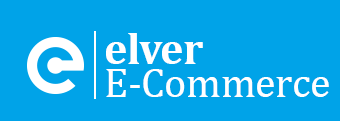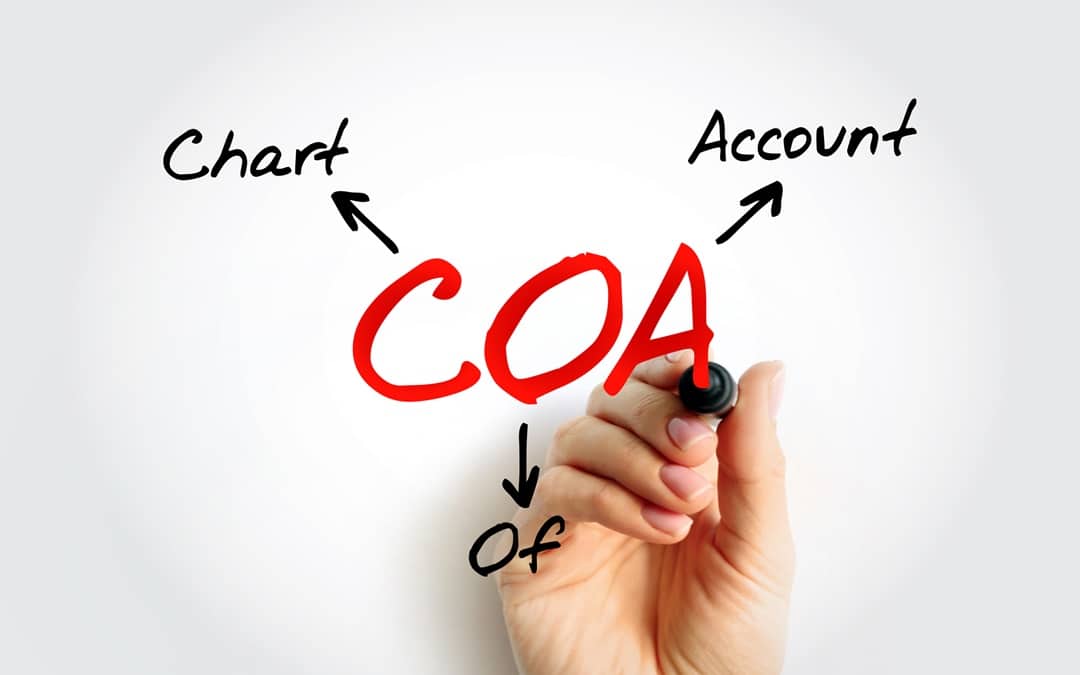Welcome to the world of e-commerce accounting! Understanding your financial landscape is crucial if you’re running an online business in the UK. The heart of this landscape is the Chart of Accounts (CoA). But what exactly is a CoA? Simply put, it’s a financial organisational tool that allows you to categorise transaction your business makes within it. This might sound technical but don’t worry. We’re here to demystify the CoA and show how it can be a game-changer for your e-commerce business.
A CoA is more than just a list of categories; it’s the backbone of your accounting system. It helps you track every penny – from sales revenue to the cost of your web hosting. In the dynamic world of e-commerce, where transactions happen in a flash, a well-organised CoA is essential. It’s not just about keeping the taxman happy; it’s about having a clear view of your financial health and having accurate and timely financial information to drive the decision-making process in your e-commerce business.
At Elver E-Commerce Accountants, we understand the unique accounting needs of online businesses. We’ve seen how a tailored CoA can transform data management, streamline financial reporting, and enhance decision-making. Whether you’re selling on Amazon, running your website, or navigating the complexities of international VAT, a customized CoA is your first step toward financial clarity and control.
So, let’s dive in and explore the Chart of Accounts – a key tool that brings order to the financial chaos and empowers your e-commerce venture to thrive.
Understanding Account Categories
In the realm of accounting, categories are the pillars that support the structure of your Chart of Accounts. These categories make sense of your financial transactions, turning them into valuable insights for your e-commerce business. Let’s break them down:
A. Assets: These are what your business owns. From inventory to computers, assets represent the tangible and intangible items that add value to your business. Accurately tracking assets is crucial for understanding your company’s worth and investment capacity.
B. Liabilities: Think of liabilities as what you owe. This includes loans, credit card debts, and other obligations. Proper management of liabilities ensures your business maintains a healthy balance between its debts and assets.
C. Equity: Equity is essentially the owner’s stake in the business. It’s what remains after subtracting liabilities from assets. This category reflects the financial health and stability of your business over time.
D. Income/Revenue: This is the lifeblood of your e-commerce business. Sales, returns, discounts – every transaction that brings money into your business falls under this category. Well-organised income accounts help in pinpointing your revenue streams and understanding your market performance.
E. Expenses: Keeping track of expenses is non-negotiable for any successful business. From marketing costs to utility bills, this category helps you understand where your money is going, enabling better budgeting and financial planning.
Each of these categories plays a unique role in painting a comprehensive picture of your business’s financial health. A meticulously crafted Chart of Accounts respects these distinctions, ensuring each transaction is placed in the right category, offering clarity and precision in your financial reporting. For e-commerce entrepreneurs, this means more informed decisions, better financial control, and a clearer growth path.
Account Numbering System
A crucial aspect of the Chart of Accounts is its numbering system. This isn’t just about keeping things orderly; it’s about making your accounting system intuitive and efficient. Each account is assigned a unique number, making it easier to locate and track specific categories of transactions.
In e-commerce, where numerous transactions occur daily, a logical numbering system is indispensable. It streamlines data entry, reduces errors, and facilitates quick access to financial information. Think of it as the GPS of your accounting system, guiding you to the exact financial data you need with precision and speed.
By adopting a systematic approach to numbering, your Chart of Accounts becomes a powerful tool for financial accounting and data management. It supports your business operations by providing clear, immediate insights into your financial health, enabling you to make informed decisions swiftly. This is especially valuable in the fast-paced world of e-commerce, where agility and accuracy are key to success.
Setting Up a Chart of Accounts
Setting up a Chart of Accounts (CoA) tailored to your e-commerce business is a strategic step towards robust financial management. This process involves defining and organising your accounts in a way that mirrors your business operations. It’s about categorising your financial transactions in a structured, logical manner that aligns with your specific business model and accounting needs.
For e-commerce businesses, this could mean creating distinct accounts for online sales channels, digital marketing expenses, or international transactions. The goal is to design a CoA that provides clear, actionable financial insights, enabling you to make informed business decisions quickly and confidently. Remember, a well-set-up CoA is a cornerstone of effective financial reporting, budgeting, and forecasting, setting the stage for sustainable growth and financial health in the dynamic e-commerce landscape.
Importance of Consistency and Uniformity
For any e-commerce business, maintaining consistency and uniformity in the Chart of Accounts is vital. This practice ensures that your financial data is accurate, comparable, and reliable over time. Consistency in categorising transactions allows for meaningful financial analysis and trend identification, which are essential for strategic planning and decision-making. Accounting tools like Xero and Dext Prepare help make consistency in how you apply your chart of accounts to transactions easier to achieve through the ability to set up bank and supplier rules that stipulate which transactions get posted to which categories. Uniformity in your Chart of Accounts also simplifies the process of financial reporting and makes it easier to comply with regulatory standards. In essence, a consistent and uniform CoA is a bedrock for building a trustworthy financial foundation for your e-commerce business.
Integrating Tax Codes and VAT
Incorporating tax codes and VAT into your Chart of Accounts is a critical step for e-commerce businesses, especially those operating across borders. This integration allows for accurate tracking and reporting of tax liabilities and compliance with international tax regulations. It simplifies the complex process of handling VAT/GST, ensuring that your business stays compliant with tax laws in different jurisdictions. A CoA that seamlessly integrates tax codes provides a clear view of your tax obligations, aiding in effective financial planning and risk management. Accounting tools like Xero allow you to set up a default tax treatment for each category in your chart of accounts, this default can then be applied by default when reconciling transactions but also overwritten as and when needed.
Chart of Accounts and Financial Reporting
The Chart of Accounts (CoA) plays a pivotal role in the financial reporting of e-commerce businesses. It serves as the framework for organising financial data, ensuring that reports like income statements and balance sheets are accurate and meaningful. A well-structured CoA allows for clear, concise financial reporting, enabling business owners to assess their financial position, performance, and cash flows effectively. For e-commerce ventures, where financial dynamics can be complex, a coherent CoA is indispensable for reliable financial reporting and analysis.
Chart of Accounts for Budgeting and Forecasting
For e-commerce businesses, the Chart of Accounts is not just for tracking past transactions but also a tool for future planning. A forecast or budget should be set up using the same Chart of Accounts your business uses to maintain its bookkeeping records. This makes it easier for you to compare actual results to budget and forecast. A CoA aids in budgeting and forecasting by providing a detailed classification of financial data. This enables business owners to analyse past trends, predict future costs and revenues, and make informed budgetary decisions. A comprehensive CoA helps in creating accurate financial forecasts, which are crucial for planning growth strategies, managing cash flow, and securing funding or investments.
Auditing and Reviewing the Chart
Regular auditing and reviewing of the Chart of Accounts are essential practices for e-commerce businesses. It’s important to regularly review your chart of accounts to ensure that it is appropriate for your business. Your chart of accounts needs to evolve with your business to remain useful. For example, if you are selling to multiple countries, it may be that you choose to bucket some less significant countries into a Rest of the World category. If these original markets have grown, it may be time to look at pulling some countries out into separate categories to get a tighter hold of them.
Collaborating with Accountants and Bookkeepers
Effective collaboration with accountants and bookkeepers is key for leveraging the full potential of your Chart of Accounts. These professionals can provide expert guidance in setting up, managing, and optimizing your CoA for maximum efficiency and compliance. They bring valuable insights into financial trends, tax optimisation, and strategic planning. For e-commerce businesses, where financial operations can be complex, having a knowledgeable team ensures your accounting practices support your business goals and adhere to regulatory standards. This partnership is crucial for maintaining a robust financial foundation.
Chart of Accounts Best Practices
Adopting best practices for your Chart of Accounts (CoA) is crucial for efficient and effective financial management in e-commerce. This includes regularly reviewing and updating the CoA to reflect changes in your business, ensuring it remains aligned with your operations and financial reporting needs. Additionally, keeping the CoA concise yet comprehensive, avoiding overly complex structures, and training your team on its usage are key practices. A well-maintained CoA not only streamlines accounting processes but also provides valuable insights for strategic decision-making and growth planning.
Conclusion
In conclusion, the Chart of Accounts (CoA) is an indispensable tool for e-commerce businesses. It provides a structured approach to managing financial data, crucial for accurate financial reporting, strategic decision-making, and compliance. As e-commerce continues to evolve, maintaining an effective CoA becomes even more essential. At Elver E-Commerce Accountants, we specialise in understanding the unique needs of e-commerce accounting. We can help streamline your CoA, ensuring it meets your business requirements while navigating the complexities of e-commerce transactions, including international VAT and GST. Don’t hesitate to reach out to us for expert guidance on optimizing your CoA for success in the digital marketplace. Book a meeting with us through our Calendly link or contact us via email to see how we can assist your e-commerce business.


